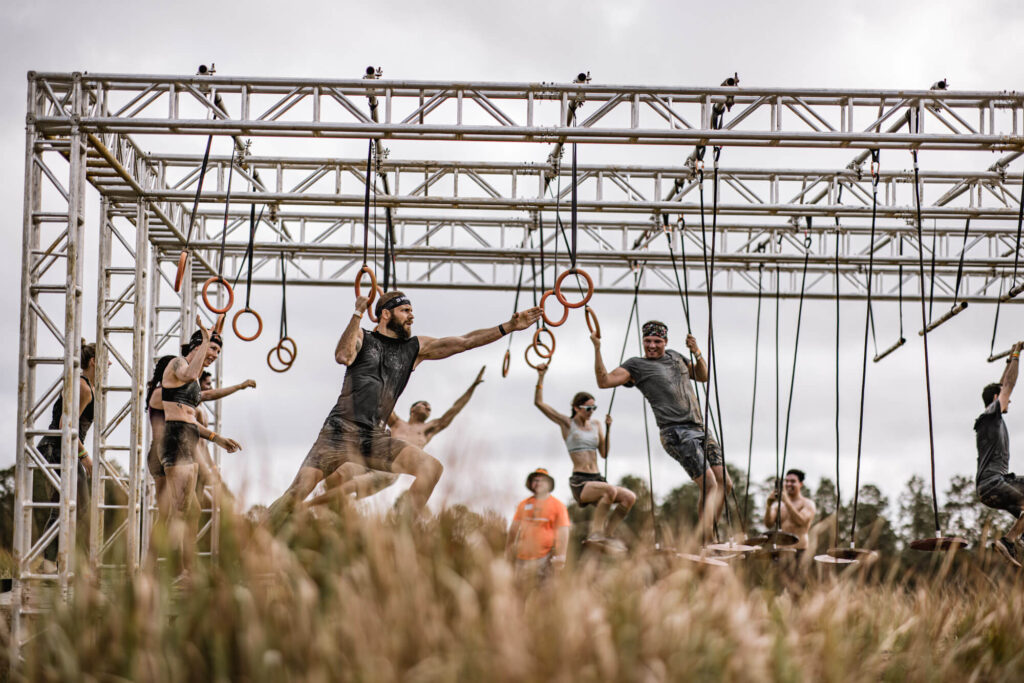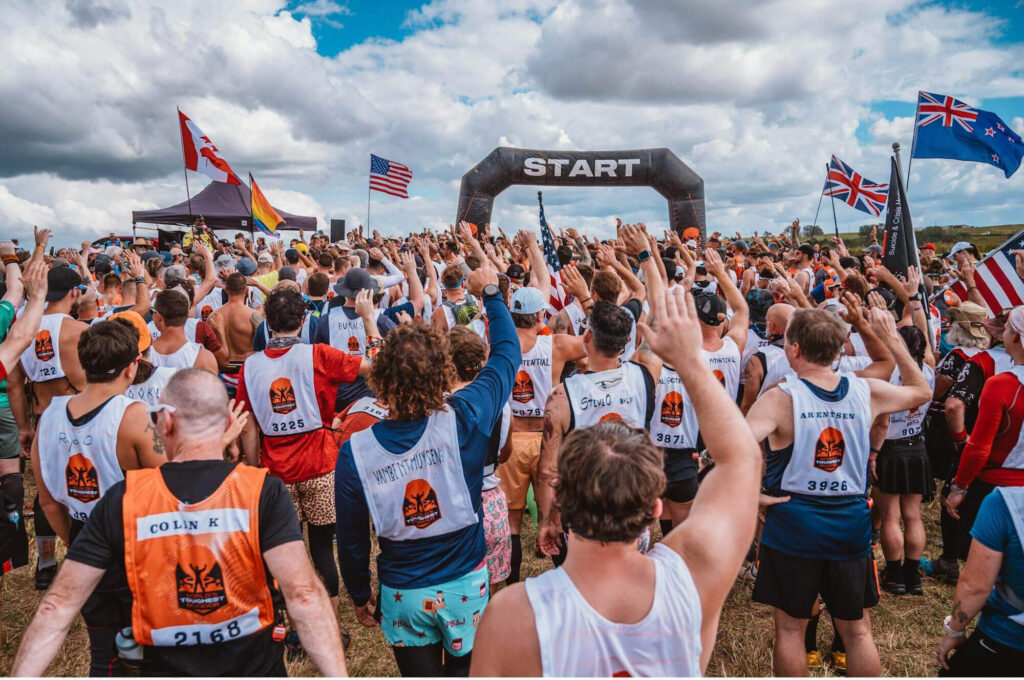Ever wonder why some athletes hit a wall, even when they’re physically prepared? The answer lies in the mind-body connection. While strength and endurance are essential, it’s mental resilience that truly separates the performers from the rest of the pack. These five mindfulness and mental resilience strategies will help you overcome not only Tough Mudder obstacles, but life’s obstacles, too.
As humans, we are complex beings, and our brain acts as the control center for our muscles. When fatigue, stress, or discouragement sets in, the brain often throws up a caution flag, sending signals to conserve energy. This might be helpful when you’re sick, but it’s not ideal during high stress events where you need to be at your best, like a stressful work presentation or a Tough Mudder endurance race.
The good news? Just like you train your muscles to lift heavy weights or run long distances, you can train your mind to operate at its peak and push past perceived limitations when it matters.
Here are five time-tested and evidence-based strategies from the world of sports psychology to help you overcome obstacles on and off the course.
Choose your location and sign up for a Tough Mudder event now: The 2024 Tough Mudder Schedule: Dates, Details, Venues, and More
Mindfulness and Mental Resilience Strategies for Overcoming Life’s (and Tough Mudder’s) Obstacles
- Become More Mindful
Mindfulness is the practice of focusing your entire attention on the present moment without judgment. It’s not about emptying your mind, but rather observing your thoughts, feelings, and bodily sensations without getting caught up in them.
What does this have to do with a stressor like a Tough Mudder event? Extensive research has shown that mindfulness training can significantly enhance focus and concentration. This high-level awareness allows you to stay present during challenging moments on the course, avoiding negative self-talk or thinking too far into the future.
Mindfulness can also improve emotional regulation. By observing your emotions without judgment, you can learn to react in a controlled way that prevents dysregulation or wasted energy on stress and anxiety. In other words, it keeps you in your personal bubble of control. - Use a Mantra
Elite athletes across all sports swear by the power of mantras. These short, powerful phrases act as mental anchors, offering a sense of focus and control during moments of pressure. At an event, a simple mantra like, “one step at a time” or, “I’ve done harder things” repeated silently during a challenging climb can be the mental nudge needed to power through.
The effectiveness of mantras lies in their ability to disrupt negative thought patterns. When fatigue sets in or self-doubt creeps up, a mantra can serve as a quick reminder of what you’re capable of. By repeating a positive affirmation, you shift your mental focus away from negativity and toward your goals.
Near the end of an event, when the fatigue creeps in, my shoulders roll forward and my stride gets longer and slower. So, I use the mantra, “tall and quick” as a reminder to stay tall with my shoulders back and quick with my feet and arms. This has helped me power through many finish lines. - Visualization
Visualization, the act of creating mental images of a desired outcome, is a powerful tool in the world of sport psychology. Imagine yourself conquering a particularly challenging obstacle, feeling the surge of accomplishment as you complete it. This visualization, also known as mental rehearsal, not only strengthens your focus and determination, but also primes your body for success.
Studies suggest that visualization activates similar neural pathways as actually performing an action. By vividly picturing yourself navigating a specific obstacle or powering through a grueling section of the course, you essentially pre-program your body for optimal performance. This builds confidence and reduces anxiety, which gives you a sense of preparedness and control throughout the race. - Reframing
We have the power to interpret similar situations in very different ways. The person who is unexpectedly forced to do something versus the person who trained for that same thing will have two very different experiences.
When you choose to look at a challenge as an opportunity for growth, you are using a strategy known as reframing – the practice of shifting your perspective on a situation – which is a powerful tool for building grit.
Instead of viewing a daunting wall climb with dread, for example, reframe it as a chance to test your upper-body strength and determination. This shift in perspective allows you to approach the obstacle with a sense of purpose and focus, rather than fear or negativity. Reframing can also be applied to moments of fatigue or self-doubt. When exhaustion or nerves set in, view them as a natural sign that your body or mind is working hard. Reframe the discomfort as a temporary hurdle you can overcome with perseverance. - Practice Overcoming Challenges
Exposure to manageable stressors can actually strengthen your stress resilience. When you push yourself beyond your comfort zone regularly, you teach your mind adaptation and stretch its boundaries for growth and mental toughness. The most obvious way to do this in your workouts, but you can incorporate it in less intense situations as well such as resisting cravings for unhealthy snacks or taking a cold shower. All of these small challenges can build resilience.
To combine this with reframing, the next time you undergo a challenging task, acknowledge the discomfort and tell yourself that it’s a sign you’re pushing your boundaries and becoming tougher. After the fact, take a moment to recognize your victory so that this is encoded in your mind to be pulled out when those bigger obstacles come your way.
AUTHOR BIO: BRIAN COMLY Brian Comly, M.S., OTR/L is the founder of MindBodyDad. He’s a husband, father, athlete, certified nutrition coach, and an occupational therapist (OT). He launched www.MindBodyDad.com and the podcast, The Growth Kit, as was to provide practical ways to live better.




